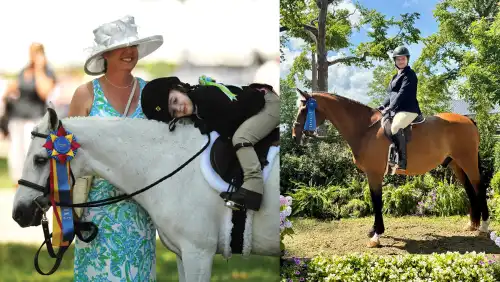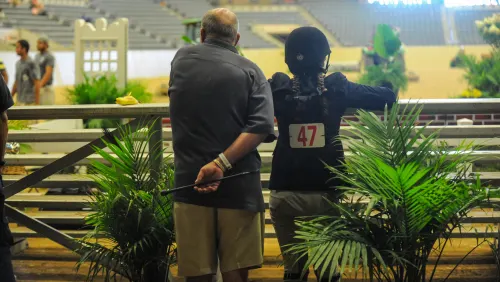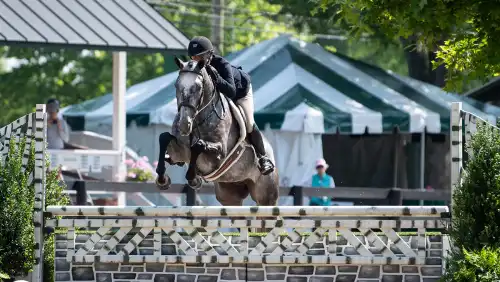Horsemanship isn’t just about riding, and the 12 riders who qualified for the 2010 USHJA Emerging Athletes Program National Level Clinic in Reno, Nev., received the opportunity today, Jan. 8, to practice their skills out of the saddle.
Dr. Midge Leitch, who has traveled with the U.S. Equestrian Team all over the world, spent the morning instructing students on what to look for when seeing a horse for the first time.
“I’ve always been interested in putting together the physical part of the horse with its talent,” said Dr. Leitch. “That, to me, is the great puzzle. That’s what kept me doing pre-purchase exams for 25 years. You get pleasant surprises and disappointments, but if you don’t have some basic understanding about what the minimal requirement for soundness is, you can be heartbroken.”
Dr. Leitch had each rider go over their assigned horses (the participants are using borrowed horses for the weekend) and tell her what they liked or didn’t like about each horse. She demonstrated how to palpate a horse’s spine and tendons, and she pointed out how different conformation flaws might affect a horse’s soundness and way of going.
She also stressed the importance of putting your hands on your horses every day, taking their temperature every day, and keeping a book or log of the horse’s health.
“There’s real value in getting to know the horse you’re going to deal with,” she said.
ADVERTISEMENT
During the lunch break, Dr. Leitch expanded her morning session by showing a variety of X-rays and MRIs of front and hind legs. She explained which X-rays she would recommend for pre-purchase exam as the riders put their hands on models of the bones of the leg.
Following Dr. Leitch’s session, the riders moved into the ring to work with the horses under the practiced eye of Mindy Bower. Bower showed the riders the importance of personal space and demonstrated how a horse needs to be just as responsive to your aids on the ground as in the saddle.
“The difference between a good rider and a great rider is how effective you are,” said Bower. “You have to put your aids on to be effective.”
Bower also showed the riders how to influence the horse’s relaxation by getting them to loosen up in the poll. She put her hand on the bridge of the nose and on the poll and put gentle pressure on the poll until the horse’s head went down. She removed the pressure as soon as the horse responded.
“I want to put my hand on him and have him relax,” said Bower, who pointed out the different signs of tension in the horse. “Their expression is everything. White on top of the eye makes you worried until it goes away.”
She also pointed out that many of us stand behind the horse’s eye, when really you should always be in front of it.
ADVERTISEMENT
In the riding groups, main clinician Peter Wylde had riders perform a series of warm-up exercises to get their horses supple and relaxed before moving on to the jumping. He started out by asking riders to trot and canter in a relaxed, but connected frame, then moved on to sitting trot to canter transitions, which Wylde feels is the best way to get a horse connected.
He had the riders test their horses’ stride with a lengthening and shortening exercise. Some of the horses found it great fun to go galloping down the long side, but all the riders handled their exuberance well.
The gymnastics session focused on riding the horse in the correct striding while finding the right distance. Wylde set up a three-jump line, which walked one step short of four strides. He had riders go through the line in four and four, then had the riders hold for five after the first jump, and push for four after the second.
Because it was the first time on these horses for all the riders, Wylde kept the jumping session light and low, but focused on the effectiveness of each rider in handling the horse they were on.
The clinic continues tomorrow, Saturday, Jan. 9, with a full schedule of jumping sessions, a written exam and more lectures on horsemanship by Dr. Leitch.
Read more about the USHJA’s Emerging Athletes Program.














